Lab Members
Principal Investigator
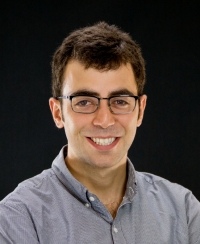
Adam Kaufman
In our lab, we investigate how to apply the tools of atomic, molecular, and optical physics to the microscopic study of quantum systems. We are interested in fundamental questions, such as, “how does classical physics –- such as statistical mechanics --- emerge from the collective behavior of quantum mechanical systems?” We also ask applied questions, for instance, “Can we develop new tools for the manipulation of individual particles, such as ions or molecules, whose interactions and internal degrees of freedom establish new prospects?” For such studies, we aim to marry the tools of quantum gas microscopy, optical tweezer technology, and high precision spectroscopy, in order to gain single-particle control at fundamental length scales and very small energy scales.
Research Associate
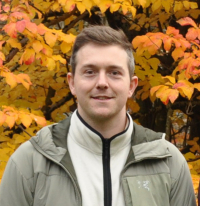
Alex Baumgaertner
Alex joined the Kaufman group as a postdoctoral researcher after completing his PhD in the group of Prof. Tilman Esslinger at ETH Zurich, where he explored topological and dissipative phenomena in a degenerate rubidium Bose-Einstein condensate coupled to ultrahigh-finesse cavity modes. His passion for tabletop AMO experiments began during his undergraduate studies at the University of Heidelberg, where he worked in the lab of Prof. Markus Oberthaler on generating arbitrary 1D optical potentials with acousto-optical devices for experiments with a degenerate 1D Bose gas. This experience led him to develop an interest in neutral atoms in optical tweezers, ultimately bringing him to Caltech for his Master’s thesis with Prof. Manuel Endres, where he was first introduced to alkaline-earth atoms in optical tweezers.
As a postdoc, Alex is exploring various research directions with the Ytterbium tweezer experiment in the Kaufman lab, including efforts toward demonstrating repeated quantum error correction and realizing quantum simulations of exotic spin models.
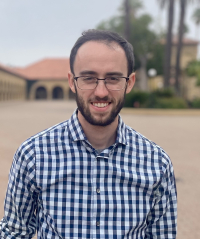
Brendan Marsh
Brendan investigates many-body quantum physics with ultracold atoms and photons to realize novel quantum systems and harness them for practical or computational benefit. Before joining JILA as a post-doctoral researcher with Prof. Adam Kaufman and Prof. Cindy Regal, he completed his Ph.D. with Prof. Benjamin Lev at Stanford in the area of multimode cavity QED. His thesis presents the first realization of a quantum-optical associative memory neural network: a system made only of ultracold atoms and light which is able to store more than a dozen patterns as memories, and recall those memories even when presented with errors, achieving a form of pattern completion. His graduate work spans experimental and theoretical aspects of many-body physics, ranging from the theory of open quantum systems to realizing driven-dissipative spin glass models in condensed matter physics. He earned a master’s degree in applied mathematics and theoretical physics from the University of Cambridge, commonly known as Part III of the Mathematical Tripos, and received a BS in physics and mathematics from the University of Missouri in 2017, where he worked on experimental biophysics with Dr. Gavin King and designed the Hessian blob algorithm.
At JILA, Brendan works on the cryogenic Rydberg atom array experiment to push the limits on the generation of large-scale, defect-free atom arrays, explore the advantages afforded by reduced blackbody radiation at cryogenic temperatures, and harness those effects to realize novel quantum systems.
Graduate Student
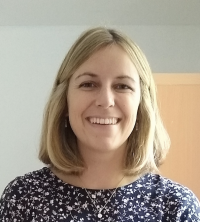
Jamie Boyd
Jamie joined the group after completing undergraduate degrees in Physics and French at the University of Oklahoma. As an undergrad, she explored several areas of research, from particle physics to accelerator design to plasma physics, before discovering atomic physics, which captured her interest. Her love for atomic physics grew while working in the group of Prof. Grant Biedermann at OU building a cesium optical tweezer experiment. After graduation, she interned for a year at the Institut d’Optique in Paris in the group of Prof. Antoine Browaeys, working on constructing the next generation of their Rb tweezer experiment. Now at JILA, Jamie is excited to be working on the new cryogenic Lithium quantum gas microscope experiment in collaboration with Prof. Cindy Regal.
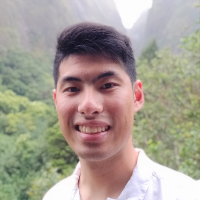
Alec Cao
Alec completed his undergraduate studies at UC Santa Barbara. He began in research working on a collaboration between Professors David Weld and Ania Jayich, constructing a UHV apparatus for studying surface decoherence of nitrogen vacancy centers. He then transitioned to the Weld lab’s ultracold lithium-7 apparatus, investigating transport dynamics and many-body chaos in Floquet lattice systems. After graduating, Alec spent a year at the University of Cambridge as a Churchill scholar in Professor Zoran Hadzibabic’s group; there he probed the properties of a uniform Bose polaron gas using potassium-39 trapped in an optical box. Alec is excited to join the strontium experiment and is looking forward to exploring applications of the platform in quantum metrology and simulation.
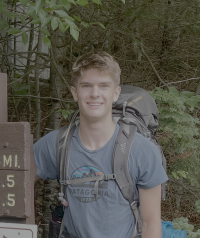
Jack Drouin
Before joining the Kaufman Group, Jack completed his undergraduate degree in Baltimore at Johns Hopkins. There, he quickly became fascinated with many-body physics, leading him to work in experimental condensed matter under Prof. Collin Broholm. Using neutron scattering, he investigated quantum magnetism and superconductivity and even tried to synthesize some novel materials. His path to AMO began the first time he heard about optical tweezers. After two years of imaging materials with scattering, the opportunity to catch individual atoms in the catch was too good to pass up. For his senior year, Jack began working in AMO under Prof. Chris Overstreet by building an injection-locked 399nm laser system for use in Yb atom interferometry. At JILA, Jack is happy to continue working with Yb and explore its application in quantum error correction and simulation of spin systems.

William Eckner
Will joined the Kaufman Group after completing his undergraduate studies at Yale University, where he graduated as a physics major. Along the way, he pursued his interests in biophysics, complex mathematical systems, and scientific research that can make a positive difference in people’s lives by studying computational neuroscience with Assistant Professor of Psychiatry and Physics John Murray. In the Murray Lab, Will studied organizing principles for gene expression in human cortex, specifically genes thought to relate to brain function or neuropsychiatric diseases, such as schizophrenia. Will subsequently discovered in an advanced lab course that he enjoyed constructing tabletop AMO physics experiments, and began working with Assistant Professor of Physics Nir Navon on a project aimed at creating a potassium BEC. With Professor Navon, he learned the fundamentals of getting an AMO experiment up and running from just a clear optics table. Will is excited to be in the Kaufman Group, where he hopes to master the art and science of AMO experiment, and more generally learn as much new physics as possible.
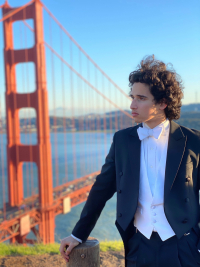
Nikhil Harle
Nikhil completed his undergraduate degree in intensive physics at Yale, where he worked with Peter Schiffer and Michel Devoret on projects studying emergent order in artificial spin ice systems and fundamental paradigms of quantum mechanics (in addition to a brief foray into COVID-19 misinformation during the pandemic). After working on projects implementing digital quantum simulations at IBM, Nikhil started his PhD at UChicago under Hannes Bernien, where he worked on a second generation dual-species tweezer array before transferring to JILA. Nikhil is thrilled to join the Yb team and build a second-second-gen experiment.
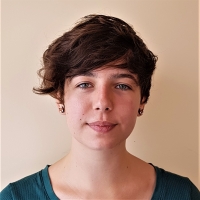
Joanna Lis
Joanna's journey to Kaufman's group took her through many countries and research disciplines. Joanna completed her undergraduate studies at University College London, UK. There her first research experience was with the biophysics group where, with Atomic Force Microscopy, she investigated DNA strands equilibration in 2D. With Professor Gaetana Laricchia Joanna completed her Master’s thesis on "Positronium production and scattering". She analysed the energy and angular dependence of the formation of this particle in neon gas, culminating in a proposal for increasing the efficiency of positronium production. At Okinawa, Japan she worked on whispering-gallery-mode resonators, where the motivation was to use their mechanical vibrations as nanoparticle sensors. Inspired by the potential of AMO table top-based experiments, Joanna joined the Ultracold Fermi Gas Group at Laboratoire Kastler Brossel, Paris, France. There she designed and constructed an objective to image lithium atoms and helped to engineeran all-optical homogeneous trap for these atoms. In Kaufman's group,Joanna will build a new tweezer experiment, this time with Yb Rydberg atoms, that aims to exploit the many-body interactions for quantum computation and simulation purposes.
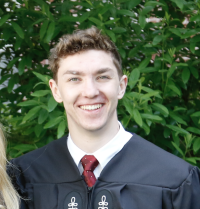
Theo Lukin Yelin
Theo joined the Kaufman group after completing a degree in Physics and Computer Science at Harvard University. After taking a year to work in Cybersecurity research and development after graduating, he decided fighting fundamental forces of nature was more fun than fighting hackers. During his undergraduate studies, he worked with professor Markus Greiner and the Atom Array lab on his thesis project to use a combination of AOMs and SLMs to enable ultra-fast phase-stable pattern generation for laser light. As part of this, he also developed novel algorithms for generating phase-controlled holograms. After spending so much of his life working with Rubidium atoms, Theo is excited to add a proton (and electron) and join the Strontium experiment, to use his knowledge of optical control to help push the limits of quantum many body physics and metrology.
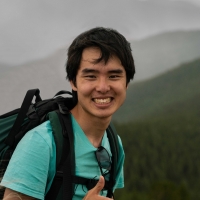
Aruku Senoo
Although “Aruku” means “walking” in Japanese, Aruku keeps running to pursue further understanding and harnessing the quantum mechanical world. In this way, he found his passion for Atomic, Molecular, and Optical Physics (AMO) in the Takahashi laboratory at Kyoto University, Japan, where he accumulated AMO and laser experiences. While he visited the University of Washington as an exchange student, he developed a ULE cavity system for the Ytterbium clock transition laser in the Gupta group. After coming back to Kyoto in 2020, he did theoretical research relating to cold atoms. Then, for his senior research, he joined the Ytterbium Quantum Gas Microscope (QGM) group in the Takahashi lab, where he observed site-resolved images of atoms and developed a DMD system for the QGM. For his Ph.D. research in the Kaufman lab, he is excited to pursue the possibility of the Ytterbium tweezer array for the applications of Quantum information and metrology
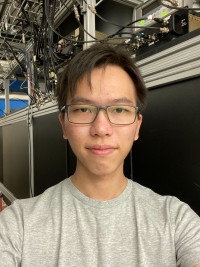
Ting You Tan
Ting You joined the Regal-Kaufman cryo-lab after completing his undergrad studies at the National University of Singapore. His love for atomic physics developed after spending a year in the group of Professor Christian Kurtsiefer. After learning the ropes of AMO physics experiments, he joined the group of Assistant Professor Travis Nicholson. For his honors project, Ting You helped to build the first Magneto-optical trap of Indium. Ting You will now help to construct a cryogenic Rydberg atom array experiment, exploring new physics with excitement.
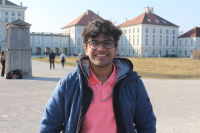
Gaurav Vaidya
Gaurav completed his undergraduate studies at the Indian Institute of Technology Madras. Here, he had his first encounter with quantum error correction, working with Prof. Mandayam to develop circuit models for channel-adapted error-correcting codes. Later, he moved on to exploring quantum synchronization in driven-dissipative systems with a former JILAn Dr. Athreya Shankar. He then moved on to work in the Preiss group at MPQ in Garching, where he fell in love with experimental AMO science and helped set up a 2D MOT for a new apparatus. For his master's thesis, Gaurav studied entangling gates between the polarization and OAM modes of photons in the Sivaramakrishnan group at IIT Madras. Now, Gaurav is thrilled to be a part of the Kaufman lab to work toward realizing fault-tolerant qubits and exploring avenues in quantum simulation with Yb Rydberg atoms.

Kaizhao Wang
Kaizhao rejoined the group as a graduate student after he finished his master's degree in Quantum Engineering at ETH Zurich and bachelor's degree at Tsinghua University in Beijing. His interest in quantum information processing started when he was a visiting student at Oxford during his bachelor's degree. After returning to Beijing, he joined the group of Prof. Kihwan Kim for a theoretical project searching for fast multi-qubit gates for trapped-ions systems. During his master's degree, he visited the Kaufman group as an intern, working on a method to stabilize laser pulse area in fast pulses. In his thesis in Prof. Jonathan Home’s group at ETH, he designed and built a test setup to individually address atoms trapped in optical tweezer arrays. Now at JILA, he will work on a brand new cryogenic Lithium quantum gas microscope in collaboration with Prof. Cindy Regal.

Alison Weiss
Alison graduated from Amherst College with a degree in Physics and Computer Science. During college, she gained exposure to several areas of physics. She worked on topological photonics research in Mikael Rechtsman's group at Penn State and on an antihydrogen hyperfine structure measurement experiment at CERN. For her undergraduate thesis, she characterized and mitigated various sources of error on Professor Larry Hunter's long-range spin-spin interaction precision measurement experiment. After college, she spent two years working on electronic design automation software at IBM. She is happy to be returning to AMO physics research as she joins the Kaufman group's strontium tweezer array experiment.
Undergraduate Student
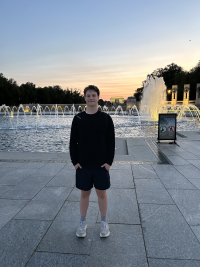
Nate Moretsky
Nate is an undergraduate student at CU Boulder, studying engineering physics and electrical engineering. He has a strong interest in Quantum Science, particularly in solid-state physics and quantum technology applications. He is keen on exploring how fundamental quantum principles can be harnessed for practical devices. Nate joined the Kaufman group as an intern on the strontium experiment, and looks forward to working with quantum metrology and simulation.
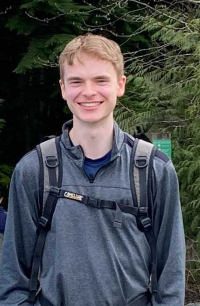
Owen Welsch
Owen is an undergraduate student studying physics and computer science at CU Boulder. He is interested in quantum information science and using computational tools to advance our understanding of fundamental processes. He likes applying problem solving techniques from these subjects to design challenges in areas such as robotics. He joined the Kaufman lab as an intern on the Lithium quantum gas microscope experiment. Through this opportunity he has enjoyed learning about atomic physics, quantum simulation, and experimental design.



